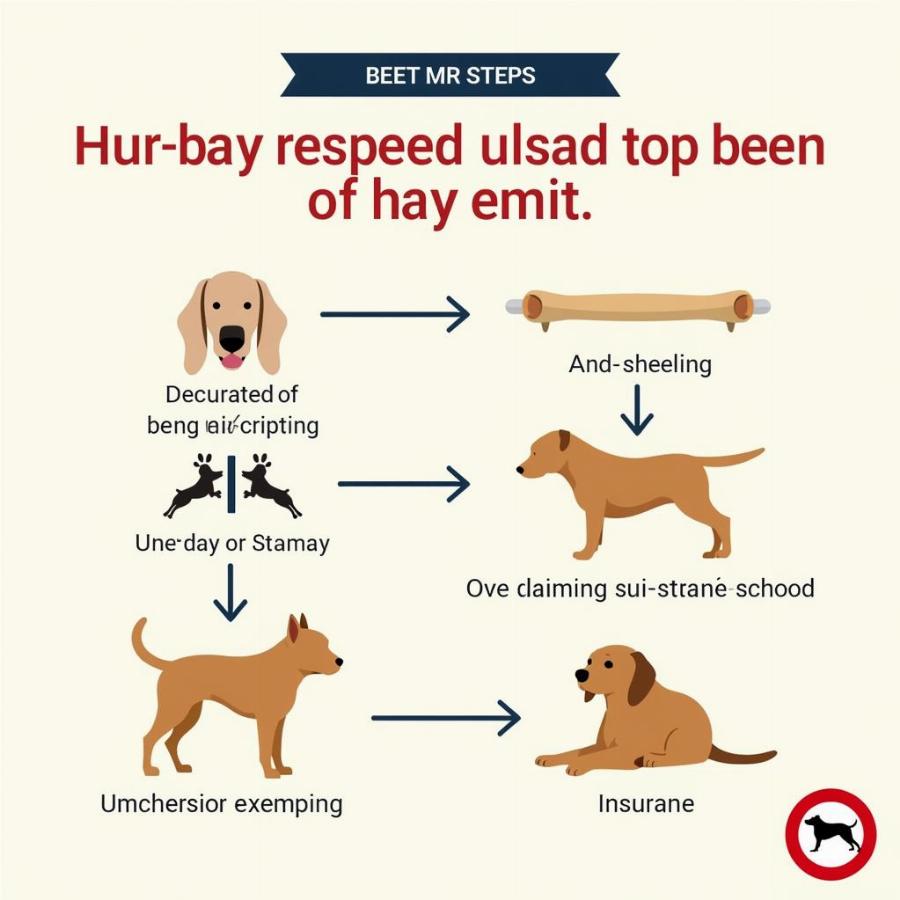Owning a dog is a rewarding experience, but it’s crucial to be aware of the legal responsibilities that come with it. In the UK, certain breeds are prohibited under the Dangerous Dogs Act 1991. Understanding this legislation is essential for responsible dog ownership and contributes to public safety. This guide covers everything you need to know about illegal breeds of dogs UK, their characteristics, and the implications of owning one.
What Dog Breeds are Illegal in the UK?
The Dangerous Dogs Act 1991 specifically bans four breeds: the Pit Bull Terrier, Japanese Tosa, Dogo Argentino, and Fila Brasileiro. The law focuses on the type rather than the breed, meaning a dog’s physical characteristics determine its legality, regardless of its actual pedigree. This can lead to complexities in enforcement, as mixed-breed dogs resembling these banned types may also be seized.
Pit Bull Terrier
Pit Bulls are historically bred for bull-baiting and dogfighting. They’re known for their muscular build, short coat, and powerful jaws. Identifying a purebred Pit Bull can be difficult due to crossbreeding.
Japanese Tosa
The Japanese Tosa is a large, mastiff-type dog bred for dogfighting. They have a short, dense coat and a powerful, athletic physique. Their rarity in the UK makes encountering one unlikely.
Dogo Argentino
Originally from Argentina, the Dogo Argentino was bred for big-game hunting. They are large, white dogs with a short coat and a powerful bite. While they can be loyal companions, their hunting instincts can pose a risk if not properly managed.
Fila Brasileiro
The Fila Brasileiro, also known as the Brazilian Mastiff, is a large guarding breed. They are known for their protective instincts, imposing size, and distinctive loose skin. Their wariness of strangers can make them challenging pets for inexperienced owners.
Why are These Breeds Banned?
The Dangerous Dogs Act aims to protect the public from breeds considered to pose a significant risk of harm. The legislation focuses on preventing dog attacks and promoting responsible ownership. While the effectiveness of breed-specific legislation remains a subject of debate, the law stands as a measure to address public safety concerns.
Public Safety Concerns
The primary justification for the ban is the potential danger these breeds pose. Their physical capabilities, coupled with certain behavioral traits, can result in serious injuries if they attack. While not all dogs of these breeds are aggressive, the law aims to minimize the risk to the public.
The Controversy Surrounding Breed-Specific Legislation
Critics argue that breed-specific legislation unfairly targets dogs based on appearance rather than individual temperament. They emphasize the importance of responsible ownership, training, and socialization in preventing dog bites regardless of breed. The debate highlights the complexity of balancing public safety with the rights of dog owners.
What Happens if You Own an Illegal Dog Breed?
Owning a prohibited dog can result in serious consequences, including hefty fines, imprisonment, and the dog being seized and potentially euthanized. Ignorance of the law is not a defense. It’s crucial to be aware of the breeds covered by the Act and ensure any dog you own or consider owning complies with the legislation. You can learn more about specific breeds banned in the UK on our dedicated page: dog breeds that are illegal in the uk.
Are There Exemptions to the Dangerous Dogs Act?
In certain circumstances, exemptions can be granted if the dog is deemed not to pose a danger to the public. This involves a strict process requiring the dog to be microchipped, neutered, muzzled in public, and kept on a lead by a responsible adult. The owner must also obtain third-party insurance and demonstrate they can control the dog. For more information on the UK’s ban on dog breeds, you can visit uk ban dog breeds.
 Exemption Process for Illegal Dog Breeds in the UK
Exemption Process for Illegal Dog Breeds in the UK
What Can I Do If I Encounter a Potentially Illegal Dog?
If you encounter a dog you suspect might be a banned breed, avoid approaching it and contact your local police or council’s dog warden. They are trained to assess the situation and take appropriate action. Remember, public safety is paramount. You can find more about banned dogs in the UK at uk banned dogs. It’s important to remember that not all powerful dogs are necessarily illegal, but it’s best to err on the side of caution. For a comprehensive list of banned breeds, see our guide on what breeds of dog are banned in the uk.
Conclusion
Understanding the Dangerous Dogs Act 1991 and the illegal breeds of dogs UK is essential for responsible pet ownership. By being aware of the legislation and taking appropriate precautions, we can contribute to a safer environment for both people and dogs.
FAQ
- What are the four banned dog breeds in the UK? Pit Bull Terrier, Japanese Tosa, Dogo Argentino, and Fila Brasileiro.
- Is it illegal to own a dog that looks like a banned breed? Yes, if it shares significant physical characteristics with a banned breed.
- What are the penalties for owning an illegal dog? Fines, imprisonment, and the dog being seized and potentially euthanized.
- Can I get an exemption for my banned breed dog? Potentially, under strict conditions and through a rigorous application process.
- Who should I contact if I see a potentially illegal dog? Your local police or council’s dog warden.
- What is the focus of the Dangerous Dogs Act 1991? Protecting the public from breeds considered dangerous.
- Is breed-specific legislation controversial? Yes, there is ongoing debate about its effectiveness and fairness.
See also: banned dogs uk
Beaut Dogs is your trusted source for all things related to dog breeds, offering expert advice on care, training, and responsible ownership. We are dedicated to providing valuable resources to help you navigate the world of dog ownership. For any further questions or concerns, please email us at [email protected] for detailed and accurate information from Beaut Dogs (https://beautdogs.com).